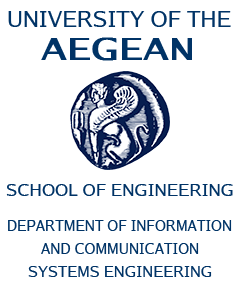Education
- Telecom ParisTech, Institute Eurecom, Sophia-Antipolis - Msc in Communications and Computer Security
- National Technical University oif Athens, Meng in Electrical and Compute Engineering
Research Interests
- Web applications & SaaS software security and privacy
- Applied machine learning
- Web forensics
Teaching Activities
Journals
Copyright Notice: This material is presented to ensure timely dissemination of scholarly and technical work. Copyright and all rights therein are retained by authors or by other copyright holders. All persons copying this information are expected to adhere to the terms and constraints invoked by each author's copyright. In most cases, these works may not be reposted or mass reproduced without the explicit permission of the copyright holder.
Abstract
The critical process of hiring has relatively recently been ported to the cloud. Specifically, the automated systems responsible for completing the recruitment of new employees in an online fashion, aim to make the hiring process more immediate, accurate and cost-efficient. However, the online exposure of such traditional business procedures has introduced new points of failure that may lead to privacy loss for applicants and harm the reputation of organizations. So far, the most common case of Online Recruitment Frauds (ORF), is employment scam. Unlike relevant online fraud problems, the tackling of ORF has not yet received the proper attention, remaining largely unexplored until now. Responding to this need, the work at hand defines and describes the characteristics of this severe and timely novel cyber security research topic. At the same time, it contributes and evaluates the first to our knowledge publicly available dataset of 17,880 annotated job ads, retrieved from the use of a real-life system.
Abstract
Corporate hiring has recently been ported to the cloud, mainly through the use of Applicant Tracking Systems (ATS). However, the online exposure fueled a new type of online scam, namely Employment Scam, that jeopardizes job seekers privacy and harms the reputation of organizations. Employment Scam remains largely unexplored until now. It shares common characteristics with relevant fraud detection problems such as email spam and phishing but its own peculiarities can intrigue researchers to delve deeper into the field. To this direction, this article also presents a preliminary empirical analysis of real-life fraudulent job ads.
Conferences
Copyright Notice: This material is presented to ensure timely dissemination of scholarly and technical work. Copyright and all rights therein are retained by authors or by other copyright holders. All persons copying this information are expected to adhere to the terms and constraints invoked by each author's copyright. In most cases, these works may not be reposted or mass reproduced without the explicit permission of the copyright holder.
Books
Copyright Notice: This material is presented to ensure timely dissemination of scholarly and technical work. Copyright and all rights therein are retained by authors or by other copyright holders. All persons copying this information are expected to adhere to the terms and constraints invoked by each author's copyright. In most cases, these works may not be reposted or mass reproduced without the explicit permission of the copyright holder.
Chapters in Books
Copyright Notice: This material is presented to ensure timely dissemination of scholarly and technical work. Copyright and all rights therein are retained by authors or by other copyright holders. All persons copying this information are expected to adhere to the terms and constraints invoked by each author's copyright. In most cases, these works may not be reposted or mass reproduced without the explicit permission of the copyright holder.
Conferences Proceedings Editor
Copyright Notice: This material is presented to ensure timely dissemination of scholarly and technical work. Copyright and all rights therein are retained by authors or by other copyright holders. All persons copying this information are expected to adhere to the terms and constraints invoked by each author's copyright. In most cases, these works may not be reposted or mass reproduced without the explicit permission of the copyright holder.





 Download
Download